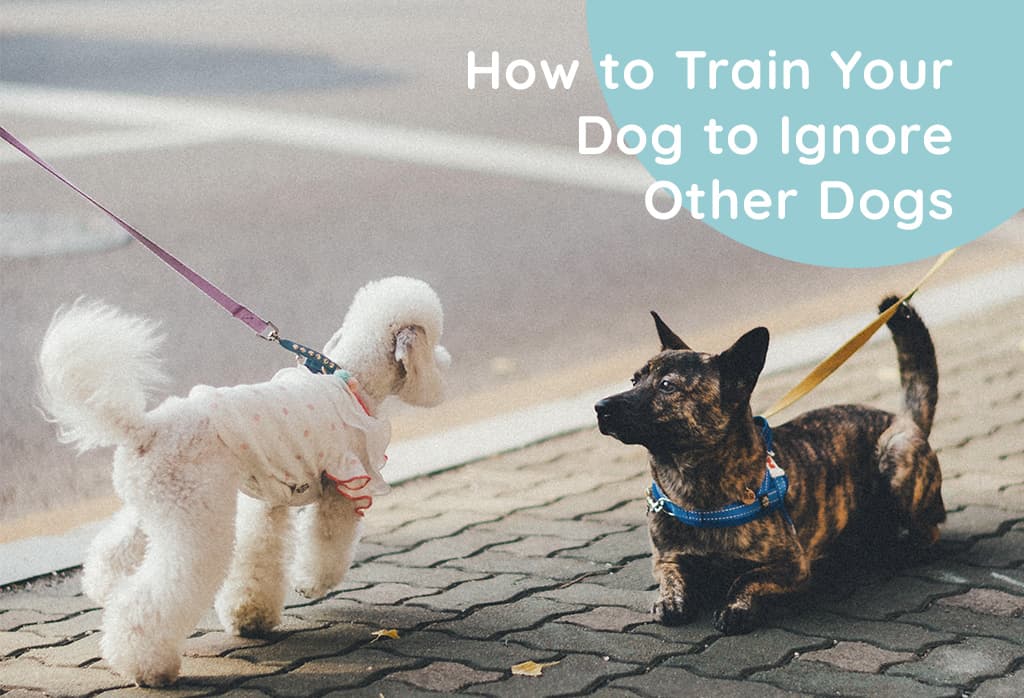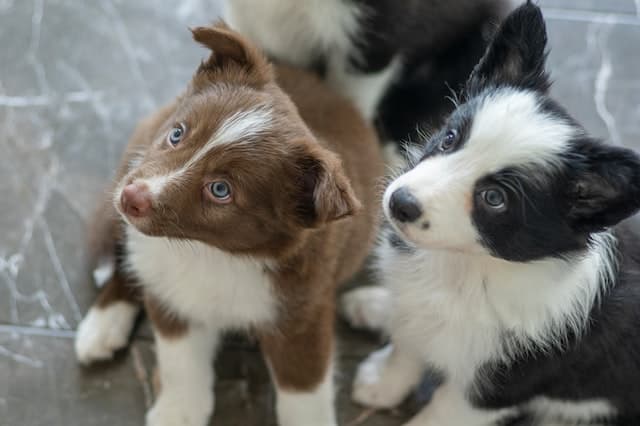If you own a dog, you’ve probably had the experience of trying to walk your dog while they pull and bark at every other dog they see.
Not only is it an unpleasant experience for you, but it can also harm your dog and the other dogs in the area.
As a result, teaching your dog to ignore other dogs is a necessary skill that every dog owner should acquire.
In this article, we’ll go through how to educate your dog to ignore other dogs step by step.
The Value of Teaching Your Dog to Ignore Other Dogs
Teaching your dog to ignore other dogs is vital for their protection and the safety of other dogs and humans around you.
When your dog can walk gently and confidently past other dogs without responding, everyone involved has a more tranquil and happy experience.
The Advantages of Teaching Your Dog to Ignore Other Dogs
There are various advantages to teaching your dog to ignore other dogs, including:
Increased Safety: When your dog behaves well with other dogs, it can help to avoid fights and keep everyone safe.
Improved Confidence: When your dog can stroll peacefully by other dogs without responding, it helps boost their confidence.
Relationship Strengthening: When your dog trusts you to keep them safe and is well-behaved, it can assist in deepening your bond.
A Summary of the Training Procedure
Teaching your dog to ignore other dogs is a lengthy process that involves perseverance, consistency, and commitment.
It’s critical to remember that every dog is unique and will require a unique training method.
The following are the general steps you must take:
- Understanding the issue
- Starting Again
- Basic obedience instruction
- Counterconditioning and desensitization
- Distraction practice
- Advanced training methods
- Troubleshooting and common issues
Now that we’ve covered the basics let’s review each step in further detail.
Understanding the Issue
Before you can teach your dog to ignore other dogs, you must first understand why they are reacting in the first place.
Fear, hostility, and a lack of socialization are all common reasons dogs respond to other dogs.
Understanding your dog’s trigger points might assist you in developing a training plan that is personalized to their individual needs.
Why Is It Important to Address This Habit Early?
It’s critical to address this tendency as soon as possible since the longer your dog reacts to other dogs, the more ingrained the behavior will become.
This can make subsequently training your dog to ignore other dogs more challenging.
How to Determine Your Dog’s Trigger Points
It would help if you observed your dog’s behavior near other dogs to determine trigger spots.
Please note when they begin to respond, what they are reacting to (size, breed, etc.), and how they are reacting (barking, growling, etc.).
This information will assist you in developing a training plan that is tailored to your dog’s requirements.
Starting Again
You can begin training now that you’ve discovered the issue and your dog’s trigger areas.
Here are the steps you must take:
Establishing Expectations and Objectives for Your Dog
Choose your goals for training and the behaviors you want to see from your dog.
Selecting the Best Training Tools and Equipment
Based on your dog’s needs, you may require specialized tools and equipment to train them adequately.
Building a Risk-Free Training Environment
Your training setting should be safe and free of distractions that could elicit a reaction from your dog.
Creating a Behavior Baseline for Your Dog
Before training, you must create a baseline for your dog’s behavior.
This entails studying their behavior in the presence of other dogs without training to see how they react.
Basic Obedience Instruction
Before teaching your dog to ignore other dogs, they must be taught basic obedience.
This includes sit, remain, come, and heel commands.
Basic obedience training will help you establish yourself as your dog’s leader and offer you more control over its behavior.
Counterconditioning and desensitization
Desensitization and counterconditioning include exposing your dog to its triggers in a controlled environment to teach them to link pleasant experiences with those triggers.
Here is how it works:
Begin with a Trigger that is sufficiently distant from your dog: Begin with a trigger that is far enough away from your dog that it does not elicit a reaction.
This may be a dog on the other side of the street or a dog in a local park.
Reward Your Dog for Being Calm: Reward your dog with a treat or praise whenever they see the trigger but do not react.
Gradually Reduce the Distance: Gradually reduce the distance between your dog and the trigger while rewarding calm behavior.
Raise the Difficulty Level: If your dog gets familiar with the trigger at a set distance, up the difficulty level by adding more triggers or moving the trigger closer to your dog.
Distraction training
Distraction training entails educating your dog to focus on you and obey your directions even when distractions are around.
Here is how it works:
Begin with a command your dog understands: Begin with a command that your dog is familiar with, such as “sit” or “stay.”
Offer a Distraction: Give your dog the command while introducing a distraction, such as a toy or treat.
Reward them if they obey.
Raise the Difficulty Level: Raise the difficulty level over time by introducing more diversions or making the distractions more attractive.
Advanced Training Methods
You can utilize more sophisticated training strategies once your dog has mastered the fundamentals of obedience training, desensitization, and counterconditioning.
These are some examples:
Behavior Replacement Training entails teaching your dog an alternate behavior to the one they currently display when exposed to a trigger.
Clicker Training: Clicker training is a type of positive reinforcement in which a clicker conveys to your dog that they have done something correctly.
Time-Outs: Time-outs can be useful for interrupting and preventing undesired conduct.
Troubleshooting and Frequent Issues
While teaching your dog to ignore other dogs is a simple procedure, you may face frequent obstacles along the way.
Here are some troubleshooting ideas to assist you in overcoming them:
Maintain Consistency: When it comes to training your dog, consistency is essential.
Maintain your workout schedule and keep going if progress is gradual.
Be Patient: Training your dog to ignore other dogs takes time and patience.
Don’t expect immediate results.
Get Expert Assistance: If you need help training your dog, feel free to seek professional assistance from a dog trainer or behaviorist.
Conclusion
Teaching your dog to ignore other dogs is a skill every dog owner should master.
You may educate your dog to walk peacefully and confidently past other dogs by following the step-by-step procedure detailed in this blog post.
Remember to be consistent and patient and to seek expert help if necessary.
You and your pet can establish a quiet and delightful walking experience with time and effort.









